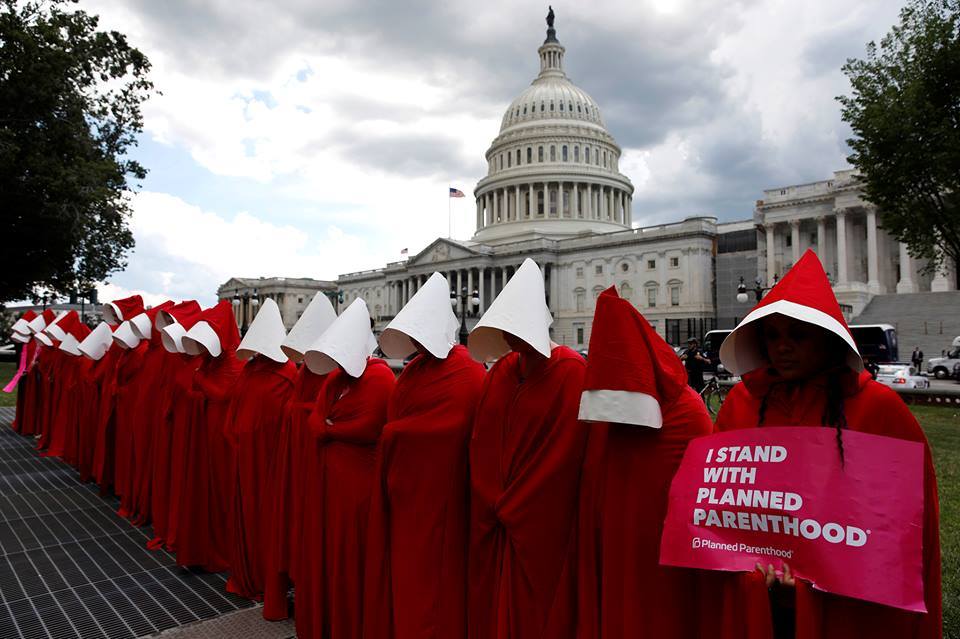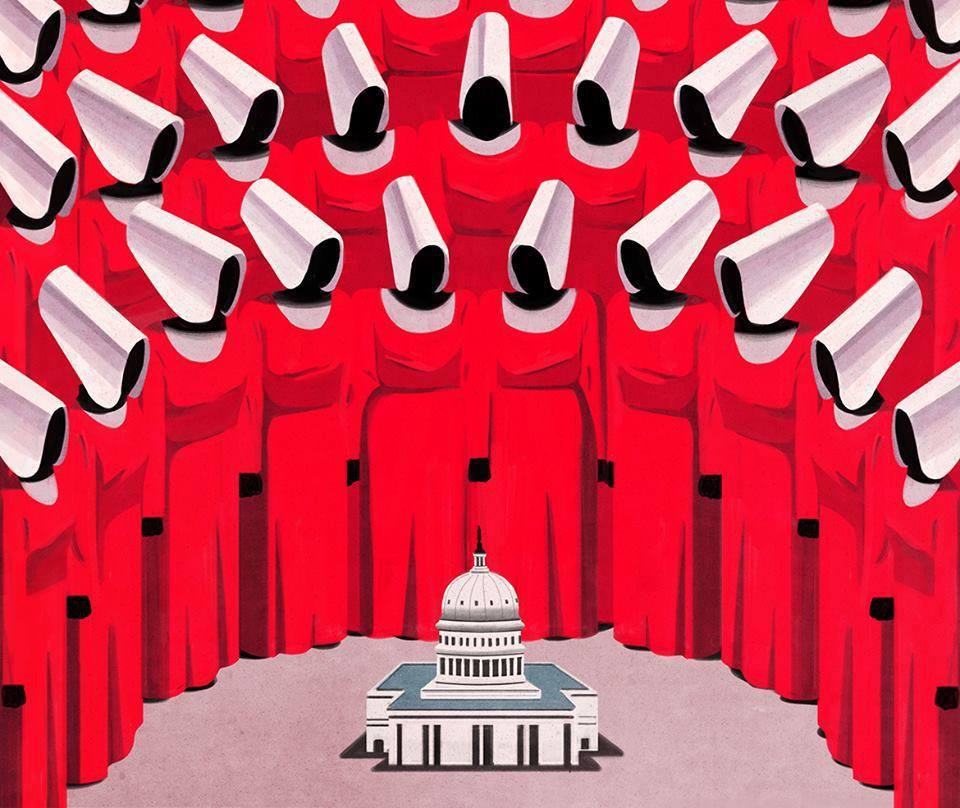A compelling adaptation in an age of dystopia
By Nora Westgeest
Gripping, heart breaking, yet wonderfully cunning is the new TV adaptation by Bruce Miller, of Margaret Atwood’s classic novel. It is the story of a young woman, Offred, who lives in an extremely repressed society, run by men. As fertility is declining, she is obliged to become a female slave, a “handmaid”. Hands are amputated, women are raped, and rebels are stoned. Beware of graphic content, as it is all part of the gothic –inspired plot. Visually showcasing the haunting and often gruesome details of a totalitarian world, the series has aroused many to contemplate trends in present-day politics. After its airing in April, the series has quickly been characterized as a frightfully relevant translation of the current United States landscape. The adapted dystopia draws indeed great parallels with today’s presidency in the United States, and sparks debates on political influence, sexual harassment, and social media influences.
Since the novel’s release in 1985, many have predicted the ghastly stories of the novel to come true. And now, the new Hulu TV adaptation strikes the iron while it’s hot: female oppression, property-like objectification, rape, and the dependence of women on men, are recurrent elements of in many of today’s discussions. The sexual harassment sparking the hashtag #MeToo is but the top of the iceberg. The relevancy of The Handmaid’s Tale involves the actual decline of fertility rates amongst western men, Trump’s reinstatement of the Global Gag Rule, ‘slut-shaming’ of women on social media, and women’s rights activists that go as far as wearing the handmaid’s distinguishing red cloak and white bonnet.

The show’s play with various visual cues and plot additions is used to reference a host of relevant issues. The symbolic colour palette of crimson red – a symbol for fertility, and paradoxically, blood and death – and the blue of Virgin Mary – marking those of higher rank – engages the audience in hierarchical politics. But it is the ghastly atmosphere that draws us in, and as the first episode unveils itself, we are absorbed in imagery of decaying greyish buildings, hanging bodies, sounds of whimpering sighs, and off-putting colour schemes. Well done Miller, for creating a visually dystopian setting. The haunting atmosphere is not there, however, in purely aesthetic form, but also in a psychological gothic element, namely a twentieth-century element of terror: the horror of a political and religious labyrinth, the spilling over of boundaries, and its uncertain effects on audiences [1]. Ring a bell?
In order to make the plot speak relevantly, a big change happens in the portrayal of the protagonist Offred herself. Atwood makes her, in the literary version, complicit to Gilead, as she becomes indifferent to the world and actions around her. The Offred portrayed by Elisabeth Moss, however, is fervently rebellious and protests in violent marches. Offred’s friend, Moira, portrayed by Samira Wiley, even kills a man to get out of a prostitution centre. The inclusion of anarchical characters in the series, with a climactic rebellious act in the season’s finale, might be a good Hollywood move to trick its audience in its suspense, but the rebellion can be seen to accurately reflect a current yearning for upheaval.
As happens with adaptations, there is a weight of expectation on the shoulders of its makers. Yet the highly critical content of the novel was able to work with the form of the series under Bruce Miller’s wings, producing a relevant contemporary rendition.There is so much more can be said about The Handmaid’s Tale, and even though the new TV show might not be to everyone’s taste, it is definitely an interesting kick-start for debate.
[1] Botting, Fred. “Gothic, London and New York.” (1996).
Nora Westgeest, Class of 2018, is a Literature and Art History major from Brussels, Belgium.

